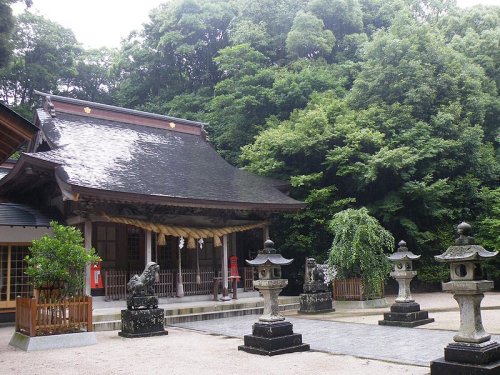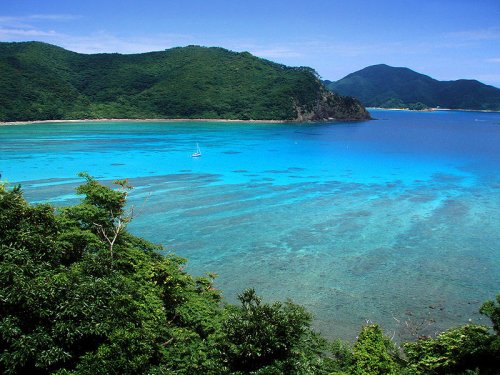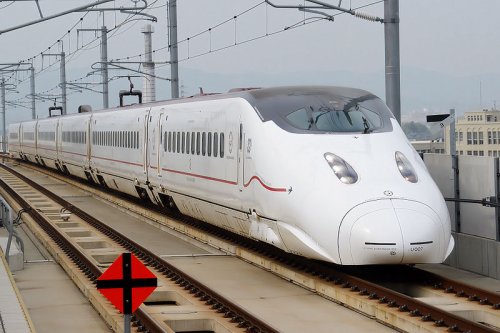 City of Fukuoka, Kyushu
City of Fukuoka, KyushuSource: http://commons.wikimedia.org/wiki/File:20100720_Fukuoka_3704.jpg
Author: Jakub Halun

Author: Jakub Halun

Kyushu (九州) is the southernmost of the four main islands of Japan. It covers 35,640 sq km (13,761 sq mi) and has a population of 13.2 million people (2011 estimate). The largest city in Kyushu is Fukuoka.
The name Kyushu means "nine provinces". This name was derived under the Gokishichido (五畿七道) system devised during the Asuka Period (AD 538-710), when Kyushu and the surrounding islands were called Saikaido (西海道). During that time, the region comprised nine provinces namely Chikuzen, Chikugo, Buzen, Bungo, Hizen, Higo, Hyuga, Osumi and Satsuma, along with two islands, Iki and Tsushima. Kyushu was reorganised into seven prefectures during the Meiji Restoration of 1871.
 Imari Shrine, Saga Prefecture
Imari Shrine, Saga PrefectureSource: http://commons.wikimedia.org/wiki/File:Imari_Shrine_1.jpg
Author: Atsasebo

Author: Atsasebo

As with the other islands of Japan, Kyushu is mountainous and volcanic. The tallest mountain in Kyushu is Kuju-san (1,788 m, 5,866 ft). The most active volcano in Japan is also in Kyushu, the 1,591 m (5,220 ft) Mount Aso. The island also has a number of mud hot springs that have been developed as therapeutic treatment resorts.
Being the southernmost of the four main islands, Kyushu enjoys a warmer climate than the rest of Japan. The climate here can be described as subtropical.
 Katetsu Cove, Kagoshima Prefecture
Katetsu Cove, Kagoshima PrefectureSource: http://commons.wikimedia.org/wiki/File:View_of_Katetsu_cove_from_nearby_Manen-zaki.jpg
Author: Tsuyoshi Iwamoto

Author: Tsuyoshi Iwamoto

Planning your trip to Kyushu
Kyushu is linked with Honshu by the Kanmonkyo Bridge, which was completed in 1973. The Shinkansen bullet train travels from Honshu to Kyushu by the Kanmon Railway Tunnel, completed in 1975. You can now travel from Tokyo to Fukuoka by train. It takes 5 hours 40 minutes and costs ¥22,000. The bullet train now goes all the way to Kagoshima. The journey from Tokyo to Kagoshima takes 7 hours. It requires a change in Osaka, and the fare is ¥30,000.You can also fly to Fukuoka. The Fukuoka International Airport is the busiest after Tokyo, Chubu and Kansai. It receives flights from all over Asia, as well as domestic flights from cities in Japan.
 Kyushu Shinkansen Series 800
Kyushu Shinkansen Series 800Source: http://commons.wikimedia.org/wiki/File:Kyushu_Railway_-_Series_800-1000_-_01.JPG
Author: JKT-c

Author: JKT-c

Major Cities of Kyushu
- Fukuoka - largest city
- Beppu
- Kagoshima
- Kitakyushu
- Kumamoto
- Miyazaki
- Nagasaki
- Sasebo
Tourist Attractions of Kyushu
- Amami Islands
- Kirishima
- Mount Aso
- Tanegashima
- Usuki
- Yakushima
Prefectures of Kyushu
 Latest updates on Penang Travel Tips
Latest updates on Penang Travel Tips
 Map of Roads in Penang
Map of Roads in Penang
Looking for information on Penang? Use this Map of Roads in Penang to zoom in on information about Penang, brought to you road by road.
Copyright © 2003-2025 Timothy Tye. All Rights Reserved.

 Go Back
Go Back